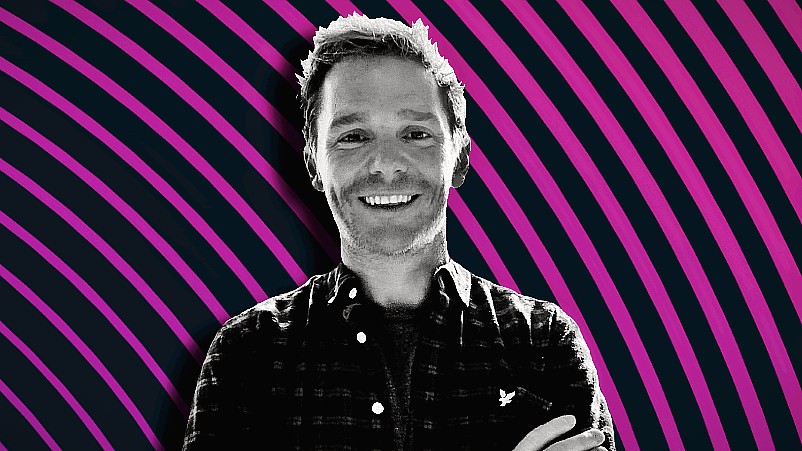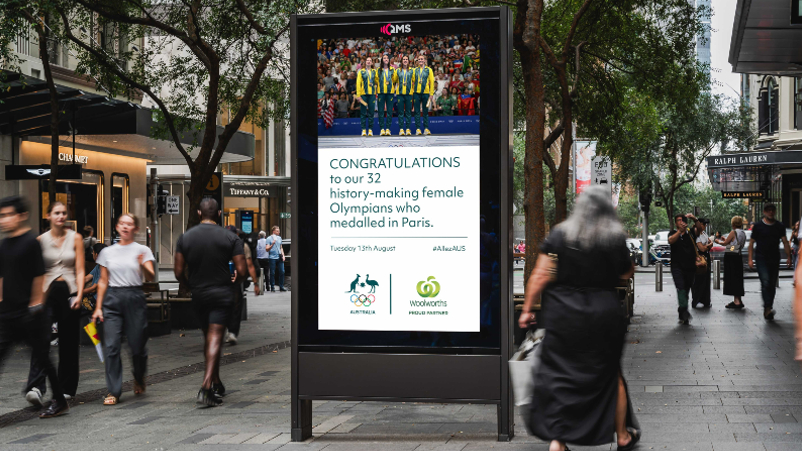B2B marketing fundamentals upended: Bain-B2B Institute study consigns traditional lead gen, KPIs, metrics to bin as ‘hidden buyers’ missed, trillions lost

The B2B Institute's Jann Schwarz and Mimi Turner: Massive study shows B2B's whole model is wrong. Fixing it could unlock trillions of dollars of upside – fast.
B2B buyers across 515 brands – including Tesla, PepsiCo, Delta, Pfizer, Hyatt and Comcast – add heft to a growing body of evidence that B2B marketing is literally missing half of decision-makers and losing trillions of dollars in deals annually as a result. The Bain-backed study, by LinkedIn-funded think tank The B2B Institute, suggests “hidden buyers” influence half of the buying process and have very different requirements from target buyers. They don’t care about features, it’s all about downside risk management, AKA backside covering. It means lead generation, measurement, KPIs and fundamentally, brand-performance strategies are all wrong. Those that flip the model and think of B2B marketing as “buyer group marketing” and brand as “deal risk insurance” will unlock massive upside, fast, say B2B Institute founder Jann Martin Schwarz and EMEA and LatAm lead, Mimi Turner. Schwarz is staking his reputation on it.
What you need to know:
- At $18.7tn a year, the commerce value of the online market for B2B sales is triple that of B2C. But B2B marketers are “looking through the wrong end of the telescope” and missing half of the decision-making market, per a study of 515 B2B buyers by the B2B Institute and Bain.
- “Hidden buyers”, i.e. process-focused procurement, financial and legal people, don’t show up in leads, don’t get added to CRM systems, and “couldn’t care less” about new features and spec, per B2B Institute founder Jann Martin Schwarz.
- They just care about managing downside risk – and brand convinces them that a firm is trustworthy. If they haven’t heard of the vendor, in almost every case, they won’t buy. But they will pay more for a technologically inferior product, if the entire buying group is aware of the brand at the outset.
- Which means B2B firms need to think about brand as “deal risk insurance” and start targeting the whole buyer group – and earlier – instead of the recommendation team who they think are their actual prospects.
- The study’s findings have significant implications for B2B sales and marketing models, targeting, measurement and KPIs.
- Rewiring B2B marketing will be painful, per Schwarz, but the pay off is huge – and he’s willing to stake his reputation that those who move first will get major sales uplift, fast.
- “B2B marketing is buyer group marketing,” says B2B Institute EMEA and LatAm marketing lead Mimi Turner, and “at every stage familiarity and trust in a brand or vendor's reputation was the casting vote”.
- There’s much more in the podcast. Get the full download here.
I'm willing to stake my reputation as a B2B marketing thinker on the fact that if you successfully reach the whole buyer group, if you reach hidden buyers, just as well as target buyers, you will see an immediate spike in activity that will allow you to close more deals faster.
Growth insurance
The commerce value of the B2B online market is north of $18 trillion annually. But “40-60 per cent of deals get stalled”, says B2B Institute founder Jann Martin Schwarz, because B2B marketers are focusing on the wrong things and the wrong people. They are missing the “hidden buyers” that don’t show up in individual-focused lead gen and those process-focused buyers – procurement, finance, legals, IT security, the c-suite – don’t care about features. They just care about managing risk. They make group decisions (earlier than B2B marketers realise) based on compromise and the “least worst” option. On average, they represent half of decision-making heft, and they get to veto who gets the contract. That’s one of the key insights from a major global study conducted with Bain across 500-plus enterprise B2B buyers.
Across the study, “at every stage, familiarity and trust in a brand or vendor's reputation was the casting vote,” says B2B Institute EMEA and LatAm marketing lead Mimi Turner. Which means brand influences hidden buyers disproportionately, because it’s effectively “deal risk insurance”, per Schwarz.
The study effectively quantifies why nobody ever got fired for buying IBM and underlines why B2B’s brand and performance teams need to align much more closely to hone brand messaging to hit hidden buyers – and stop focusing on leads and individuals. They argue the findings all but obliterate the model on which B2B marketing is founded – and requires a wholesale rethink of lead gen, measurement and strategy.
Changing models means graft and pain, especially for the “rank and file KPI’d on reductionist metrics” acknowledges Schwarz. But if adopted, even moving the needle by 1 per cent will unlock $180bn of annual B2B deal-making upside – and early movers will get the biggest hit. Schwarz is willing to “stake my reputation” on brands that flip their models to reach hidden buyers will see “an immediate spike in activity” and “close deals faster”. A prospect, he says, no CEO or CFO will ever decline.
Hidden value
B2B sales and marketing teams are losing literally trillions of dollars a year because they are missing half of buyers who make the final decision – and because they are focusing on individuals via lead generation efforts rather than the whole buying group.
B2B marketing needs a rebrand to “group buyer marketing”, per Jann Martin Schwarz, founder at LinkedIn-backed think tank the B2B Institute – whose study of 500-plus B2B buyers at the likes of Tesla, PepsiCo, Delta, Pfizer, Hyatt, Kaiser Permanente, Hiscox and Comcast, in partnership with Bain and market research firm NewtonX – surgically dissects the adage that 'nobody ever got sacked for buying IBM'. Why? Because B2B buying is all about compromise, risk management and defensive arse-covering among process-focused “hidden buyers” for whom brand is ultimately everything, because it’s a proxy for trust.
Hidden buyers – procurement, finance, legal – represent half of decision-making influence, and yet most marketing operations are focused on target buyers. The two have very different ideas of what they want: Target buyers care about product specs, new features, potential. They are more open to challenger brands; hidden buyers are all about downside risk management. The two sides of the equation have to compromise and per the study, the well-known brand wins out almost every time: Only 4 per cent of deals were made when only the recommending function knew of the brand, versus 81 per cent of deals when the entire buying group knew of the brand at the outset. Hence the IBM adage – and it applies to circa $18.7 trillion of B2B transactions annually.
[Hidden buyers] are in the risk mitigation business. They don’t care that much about product features and specs. [Yet B2B vendors] are almost delusional in thinking the features they have built are so much better than anyone else’s … half of the buying group will never share that obsession. It’s not about being the best product. It’s about being the easiest vendor to agree on for the whole buying group.
$180bn mission
The study adds to a growing body of research that underlines why B2B marketing is worlds apart from B2C strategies and how most B2B marketing functions are focusing on completely the wrong people, inputs (leads) and outputs (measurement), which means KPIs are all likewise wrong. Ultimately, it’s why 40-60 per cent of B2B deals stall or fail – and illustrates that B2B marketers are “focused on completely the wrong thing”.
B2B Institute founder, Jann Martin Schwarz, is certain that if B2B marketers flip legacy models and target the entire buying group, it will rapidly deliver tens of billions of dollars in dealmaking upside. A one per cent improvement on $18.7 trillion is upwards of $180bn in annual unlocked deals.
“I'm willing to stake my reputation as a B2B marketing thinker on the fact that if you successfully reach the whole buyer group, if you reach hidden buyers, just as well as target buyers, you will see an immediate spike in activity that will allow you to close more deals faster,” says Schwarz.
Which is a prospect no CEO or CFO is every going to pass-up.
Risk rules
On average more than 20 people make up the buying decision, per the study, with target buyers representing 51 per cent and process-focused hidden buyers 49 per cent. Their differing objectives mean compromise is inevitable, which is why B2C (individual) and B2B (group) marketing are poles apart.
“When humans make a decision as a group in a corporate environment, the rules are very different,” says Schwarz. “You don't necessarily go for the best possible outcome. You go for what's good enough, and you focus on what people can agree on … B2B buying is about reaching agreement. If you don't want to be part of the 40 to 60 per cent of deals who get stalled, you need to get your group of buyers to agree on buying from you. It's incredibly important to understand the group dynamics that lead to that agreement.”
There are a few more functions that find their way into the “hidden buyers” group, per Schwarz, including IT security and “sometimes the c-suite or senior execs who have to weigh in but don’t really know the subject matter that well”. Unlike the target buyers that B2B firms have historically focused on selling to – touting technological innovations, features and productivity sizzle – for hidden buyers, “it's all about things not going wrong,” says Schwarz.
“They're not that concerned with the upside. They want a product that is good enough to do the job. They're in the risk mitigation business, they're in the managing the downside business, and so they don't care that much about product features and specs.”
Which limits cut-through for sellers who are “obsessed with their own product”, says Schwarz.
“They're almost delusional in thinking ‘the features and buttons that we've built are so much better than anyone else's, and if only the world knew about the 50 different buttons we have, they would absolutely buy from us!’. That is still very much the culture at many B2B companies. It's a product obsession and half of the buying group will never share that enthusiasm. They frankly just don’t care. So you have to get over yourself … It’s not about being the best product, it’s about being the vendor that is easiest to agree on for the whole buying group.”
Model flip
The findings have foundational implications for B2B marketing’s whole model – from lead generation, to brand messaging and targeting, to measurement and KPIs.
Hidden buyers, reiterates Schwarz, will never show up as leads.
“They don't click on stuff, they don't get captured by all the technology that marketers are now using, and therefore they're being ignored.”
(It’s a point former Forrester Principal Analyst Kerry Cunningham, now at US-based 6Sense, has also hammered home, and why the likes of B2B specialist agency Green Hat are urging marketers to focus on influencing a broader set of buyers through brand and un-gated content much earlier instead of trying to capture leads that miss half the market and arrive when a buying decision has already been made.)
If leads are all wrong, it follows that measurement and KPIs are likewise out of whack.
“People focus on the stuff that's easier to measure, and they leave a lot of value on the table. That is absolutely pervasive in B2B marketing, and that needs to stop, because we need to unlock more value,” says Schwarz.
Marketers are currently trying to buy players. They need to be buying runs – and if you want to buy runs, you've got to buy the whole buyer group. That is how you win. You're going to win more by buying the right people with your marketing budgets.
Buyer group Moneyball
B2B Institute EMEA and LatAm marketing lead, Mimi Turner, likens the shift in mindset required to the film Moneyball – where traditional approaches and received knowledge were flipped at the Oakland Athletics for data-based baseball player recruitment – changing the face of the game.
“Marketers are currently trying to buy players. They need to be buying runs – and if you want to buy runs, you've got to buy the whole buyer group. That is how you win. You're going to win more by buying the right people with your marketing budgets,” says Turner.
“B2B marketing is buyer group marketing, and if you view it through that lens, you start to diagnose the problem correctly. Whereas B2B marketing, as evidenced by leads, I would argue, is not necessarily seeing the problem correctly.”
At every stage, familiarity and trust in a brand or vendor's reputation was the casting vote ... [So] there's a whole opportunity to take a new approach to brand in B2B that's mid and lower funnel that is much more intentional and about reputational and risk mitigation messaging to hidden buyers.
Brand wins
That study underlines the power of brand within B2B.
The key requirements for ‘hidden buyers’ “are all reputational … and you cannot measure that.” Which means brand trust is key. “There's a whole opportunity to take a new approach to brand in B2B that's mid and lower funnel that is much more intentional and about reputational and risk mitigation messaging to hidden buyers,” says Turner.
“At every stage, familiarity and trust in a brand or vendor's reputation was the casting vote. People would pay more for it, they would sacrifice innovation for it, and they would sacrifice future upside for it. That's how important that was,” says Turner. “Familiarity is the glue that holds the buyer group together. Brand is the decisive factor in any group at any time when vendors are similar. And vendors don't even have to be exactly the same – we will actually pay more for better known vendors who do the same job.”
Performance rethink
Those findings have significant implications for brand and performance teams – often fighting for their share of budget within B2B marketing functions and with their own operational structures, outputs and KPIs. “That’s a real problem,” per Schwarz.
He says performance or lower funnel teams need to embrace the idea they need “reputational air cover” to convince hidden buyers they can do the job at the business end of the deal. Call it brand, he says, or call it “deal risk insurance, call it whatever you want” but recognise its importance in helping to close deals. That’s marketing’s job, he says, not generating leads or likes or any other proxy metrics.
“We would advocate for what is traditionally called performance marketing – or bottom of the funnel – teams embracing this idea of you need reputational air cover with half of the buyer group, the hidden buyers … You need air cover with these people so when the deal you're trying to close with them is on their desk, they say, ‘Of course, I've heard of this company … I am comfortable that they are going to be around in 3,4,5 years, I am comfortable making that decision’,” says Schwarz. “It is incredibly important.”
It's going to be a lot more challenging with the rank and file people who just know what they know, and they're KPI'd against very, very reductionist metrics. But they need to be liberated.
KPI overhaul
The upshot is a wholesale change for the B2B marketing model. Schwarz says the study is landing at the top end of town – with the people at Bain convinced this is big. “Everyone's in violent agreement that this is a very, very important movement,” says Schwarz.
He acknowledges that pushing the message downstream and actually driving structural change is hard – but that is top management’s immediate task.
“It's going to be a lot more challenging with the rank and file people who just know what they know, and they're KPI'd against very, very reductionist metrics. But they need to be liberated,” says Schwarz.
“I think it’s really up to the CFOs and the industry leaders of this world to realise that we need to be a little less basic in the way we look at metrics, and we need to be a bit more strategic and more value-focused, rather than just data-focused.”
If they do, then B2B marketing “can see the full picture and actually understand the problem in the right way – and then solve it right way.”
Schwarz's reputation – and huge growth upside – is riding on it.
There’s much more in the podcast. Get the full download here.


